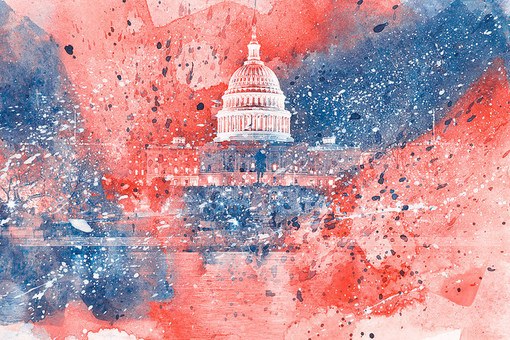Rightwing fantasies of a southern border wall are not new. Nor are they limited to Republicans or Trump supporters.
When President Trump signed an executive order last week to complete a wall along the 2,000 mile border with Mexico, he was building on decades of bipartisan consensus among lawmakers.
In fact, Congress had already approved a border wall not too long ago. In 2006, legislators—including many Democrats—passed the Secure Fence Act, which called for 700 miles of double-fence construction along certain stretches of the border. Trump cited the Bush-era law in the first paragraph of the executive order he signed Wednesday as rationale for his executive authority to order a wall be built.
Many of the same democratic leaders now bemoaning Trump’s wall voted for one at the time— Hillary Clinton, Joe Biden, Chuck Schumer, Dianne Feinstein.
Then-Senator Barack Obama, who as President would later deport a record-high 3 million people during his two terms, lauded the bill on the Senate floor, saying it would “help stem some of the tide of illegal immigration in this country.”
The most pivotal moments in the militarization of the border arguably took place during the time of Obama’s Democratic predecessor, Bill Clinton. “Operation Gatekeeper,” passed in 1994, poured billions of dollars into border security. High-intensity stadium lights, motion detectors, and remote video surveillance were installed along key points of the U.S-Mexico divide, and the amount of border patrol agents was increased by roughly a third. With resources deployed to patrol densely populated sectors, undocumented immigrants were often forced to trek barren desert and mountains. Thousands died in their quest for a better life.
“We will not surrender our borders to those who wish to exploit our history of compassion and justice,” President Clinton said at the time.
It’s no coincidence that Operation Gatekeeper followed another landmark in US-Mexico relations that same year: the North American Free Trade Agreement.
Under NAFTA, Big Ag flooded the Mexican market with heavily-subsidized corn and other staples, displacing small farmers in Mexico in one of the greatest neoliberal coups in history. The result was a flood of immigrants heading northbound in search of opportunities, accelerating one of the largest mass movements of people in history.
In short, the U.S. government, acting in the service of corporate profits, caused the very mass migration it has spent the last 25 years trying to keep out and criminalize.
Current debate about the border wall often lacks geopolitical context. It’s worth remembering that the border lies on land taken from Mexico; virtually all of the American Southwest and parts of other regions once belonged to our southern neighbors — California, Texas, Nevada, Arizona, Colorado, New Mexico, Utah. These lands were taken as spoils of war following the U.S-Mexican War, which was started by the U.S., of course. And Mexican and Mexican-Americans have lived in the region for time immemorial, thriving in a rich trans-border culture.
Some on the left have taken the border with Mexico as a given. Rather than focusing on whether it should be a wall or a fence, its length or thickness, a more useful exercise would be to reframe the parameters of debate by asking whether there should be a border at all.
Professor Jacqueline Stevens, a Political Science professor who heads the Deportation Research Clinic at Northwestern University, makes the case in her book States Without Nations: Citizenship for Mortals that abolishing birthright citizenship would help end inequality among countries by allowing people greater mobility across borders to seek opportunities.
Looking at the U.S, free movement across state lines “does not diminish the authority of states in our federal system, or the right to participate politically as a citizen of one state and not another,” she wrote in an op-ed in The New York Times. She also points to the European Union’s liberalized border policies.
Of course, such arguments are lost on the ascendant white supremacists that propelled Trump into the Oval Office. Improving on his predecessors, Trump says the entire border will be covered. Better yet, he’ll make Mexico pay for it.
The support among Republican voters for the wall shouldn’t be ignored: 65 percent of Republicans favored the project in a CBS poll taken the week before the announcement.
Psychologically, the Trump’s wall fulfills the tribalistic need of a White America oppressed by the neoliberal ruling class to have an ethnic Other to demonize and feel superior to, much as Jim Crow did in the agricultural south. In the minds of those afflicted by White backlash, the wall is key to “Make American Great Again.” Unsurprisingly, no great nativist anxiety exists about securing the northern border with Canada, though there, too, drugs and illegal immigrants seep through.
“What a wall satisfies is not so much a material need as a mental one,” writes philosopher Costica Bradatan. “ Walls protect people not from barbarians, but from anxieties and fears.”
The southern border is as artificial and arbitrary as they come. That Israeli Prime Minister Benjamin Netanyahu thought it fit to voice support of Trump’s wall recently is hardly surprising. Consider it a nod from the leader of one colonial-settler society to another.
